12+ Sample Free Student Remediation Plan
-
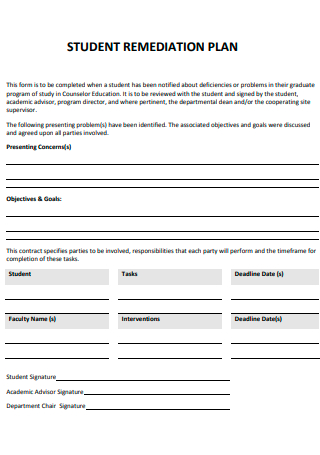
Student Remediation Plan Template
download now -
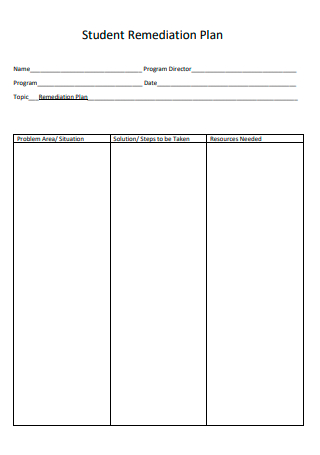
Basic Student Remediation Plan
download now -
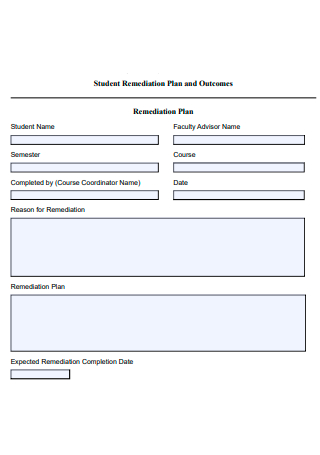
Student Remediation Plan and Outcomes
download now -
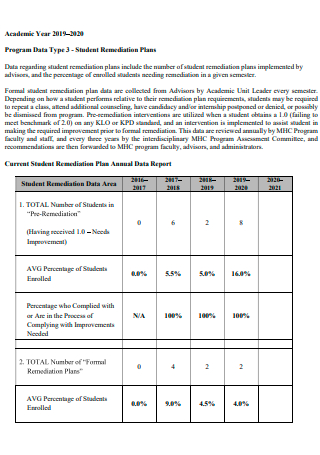
Student Remediation Plan Example
download now -
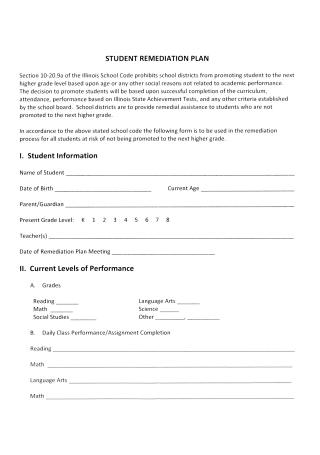
Formal Student Remediation Plan
download now -
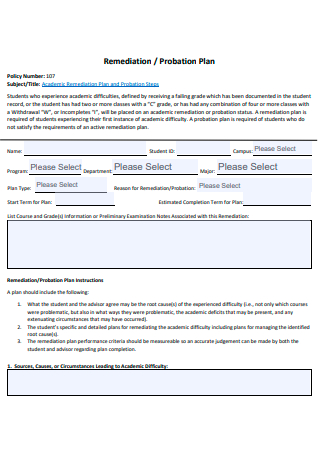
Simple Student Remediation Plan
download now -
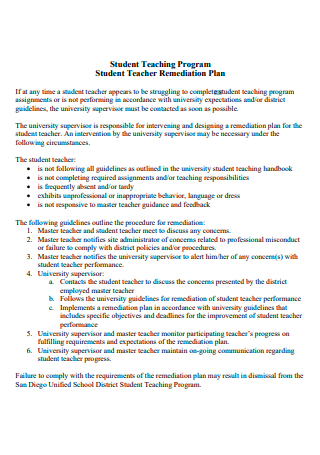
Student Teacher Remediation Plan
download now -

Printable Student Remediation Plan
download now -
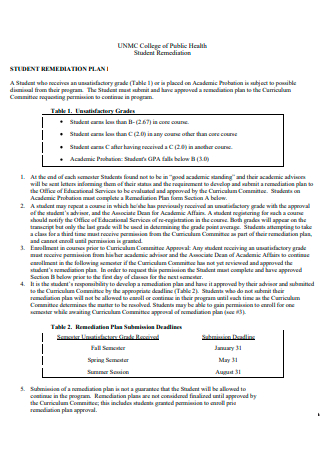
Student Remediation Plan in PDF
download now -

Graduate Student Remediation Plan
download now -
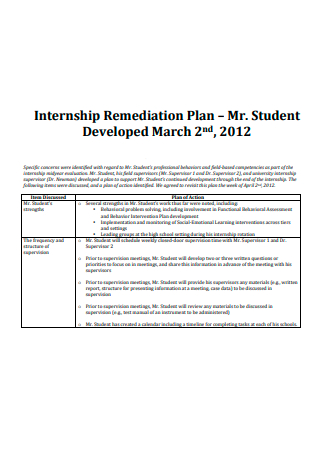
Student Internship Remediation Plan
download now -

Student Remediation Model Plan
download now -
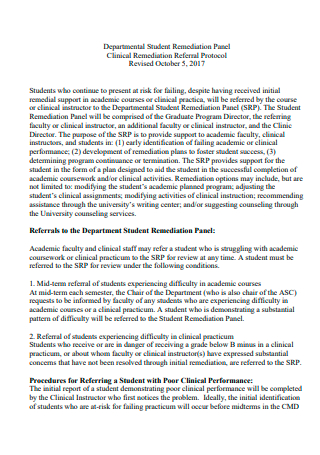
Department of Student Remediation Plan
download now
FREE Free Student Remediation Plan s to Download
12+ Sample Free Student Remediation Plan
What Is a Student Remediation Plan?
Benefits of Remedial Activities
Types of Remedial Education
Tips To Keep Struggling Students Working
How To Help Students Succeed
FAQs
What is learner remediation?
What is school remediation?
What are the objectives of remedial teaching?
What Is a Student Remediation Plan?
It is nothing unusual for a school administrator to have students who fail part of their classes. And the most effective method to get them back on track is to develop a student remediation plan. This should include diverse teaching methods and techniques, modifying instructional tactics and presentations, implementing various remedial programs/classes, the provision of clear, corrected feedback, and the promotion of positive reinforcement. The overall purpose of a remediation plan for students is to assist them in the making up for their failures and provide them with an opportunity to pass. As part of your remediation strategy, you will analyze pupils and discover learning gaps that you may be able to fill. Approximately 65% of community college students take at least one remedial course within six years of enrolling.
Benefits of Remedial Activities
A remedial exercise aims to improve a learning ability or address a problem. Remedial instruction seeks to provide tailored education to struggling students in specific subject areas. Individually or in small groups, therapeutic teaching targets academic deficiencies that may impede learning. Among the benefits of remedial teaching, activities lay the groundwork for a subject’s in-depth study. Before students can deeply comprehend the topic of study, they must master these skills.
Types of Remedial Education
Primary catch-up education is remedial education. It is granted to students who have not met the basic requirements. Typically, remedial education focuses on basic literacy and numeracy abilities to attain age-appropriate goals for average pupils. The following types of remedial support may be employed with or independently to assist kids in achieving age-appropriate goals.
Tips To Keep Struggling Students Working
Recently, New South Wales introduced a draft of its Student Behaviour Strategy. The release of a report indicating that Indigenous kids and students with disabilities are more likely to be subjected to exclusionary policies, such as suspension, in response to problematic classroom behavior was published. The behavior plans acknowledge the need for all students to access safe and respectful learning settings, a professional workforce, and treatments based on empirical evidence tailored to their different needs. The concept highlighted the importance of behavior support for producing compelling and engaging classrooms. However, it also highlighted the urgent need to strengthen instructors’ abilities to assist pupils with school behavior. Several approaches supported by empirical research have significantly minimized challenging student behavior in schools. Here are five tips.
1. The entire school must participate.
First, all schools should adopt a mentality of prevention. Suppose there are concerns about a student’s behavioral, academic, or emotional skills. In that case, there is overwhelming support for testing them as soon as possible to determine which areas they need assistance. Other studies have demonstrated that this type of school-wide system approach is related to improved social behavior and fewer suspensions and disciplinary referrals. Additionally, it enhances staff well-being, instructor self-efficacy, and teacher-student connections.
2. Set early optimistic expectations
Early in the school year, teachers can show definite and unambiguous behavioral expectations for all children. For example, teachers can instruct students to pay attention when speaking and demonstrate the most effective method to grab their attention when they need assistance. According to studies, preschoolers who acquire a variety of social and classroom behaviors early on exhibit better social behavior and less problematic behavior in the school. Creating clear anticipations can go a long way toward preventing disruptive classroom behavior. These expectations should focus on the abilities and responsibilities of the students.
3. Reward the positives
Teachers can highlight specific positive or commendable behaviors, such as assisting others, working quietly, and taking turns with objects. When a teacher observes a pupil exhibiting excellent behavior, they might “catch” them by handing them a note describing what they did well. Additionally, the student’s family might receive regular updates. This would foster a cooperative relationship between the family and school. A study revealed that tactics for managing classroom behavior that emphasized recognizing and rewarding positive behaviors were more effective than reactive and punishing strategies. They contributed to an improvement in student academic engagement and teacher well-being.
4. Break down tasks
The task may be too difficult if your student suffers or displays challenging behaviors during particular tasks. Break it down, practice the skill on your own, and write down each step leading to the result. First, instruct the initial step in the process. Provide your learner with the level of assistance necessary to finish the action, and gradually reduce your aid as the student becomes increasingly autonomous. Once the pupil has mastered the first step, proceed to the next. This method is known as task analysis. It may be enormously effective to modify a work’s difficulty level and provide focused assistance to students with problems learning a new skill.
5. Determine why children are acting out
Decades of research have demonstrated that the most effective strategy to assist pupils with troublesome behavior is to comprehend the underlying cause of this behavior. Then, by modifying the environment and teaching new skills, the student’s demands can be satisfied more safely and understandably. In the classroom, challenging behavior is like an iceberg. On the surface, it may appear as punching, screaming, fleeing the school, ripping up materials, or refusing to engage. Under the surface, pupils are adapting to a demanding situation.
How To Help Students Succeed
Because your students’ talents, knowledge, and objectives vary from class to class, you will spend time on remediation throughout the year. Adding new enrichment and remediation tactics to your already hectic schedule is brutal. Most instructors devote hours of their weekly spare time to meeting with students who require further assistance. How can you ensure that you offer your students truly effective remediation?
1. Analyze Errors Before Retakes
Typically, remediation involves permitting students to retake a quiz or test. With a simple modification, you (and your students) could benefit more from retakes as a remediation strategy. If a student or students have performed poorly, rather than allowing them to retake the test independently, have them review their mistakes. Begin by letting students examine their mistakes by reviewing the student assessment. Ask pupils to determine where they went wrong and if they have suggestions for improvement. You may even require students to present their error analyses before allowing them to retake the examination. By requiring students to spend additional time reviewing their mistakes, you urge them to perceive the information differently. This will help students recall the knowledge more effectively and, hopefully, succeed in the following evaluation!
2. Offer different kinds of tutoring
Tutoring is an integral part of remediation. Tutoring is an excellent technique for assisting a student struggling to improve a specific ability. There are numerous tutoring tactics. However, they can be divided into two types. You may begin by establishing a structure for peer tutoring. This means pupils who excel in a topic are partnered with those with difficulty. For instance, if a student in your anatomy and physiology class struggles with a particular body system, pair that student with the student who performed best on the previous test. While peer tutoring alleviates some of your responsibilities, you must still conduct the meeting and ensure that your students are collaborating. You could also traditionally tutor by yourself. This affords you some alternatives for flexibility. You could meet with the student in the morning, during lunch, or in the afternoon. Another option is to arrange for the student to get online tutoring using a digital curriculum. Each tutoring strategy is beneficial in its way and can aid struggling pupils. Relying on the situation and the learner’s personality, one may be more effective than the other. When considering tutoring as an approach for remediation, choose the option that works best for the specific kid in need.
3. Encourage Novel Methods of Review
Students who struggle are frequently the last to ask for assistance. After grading their work, you will only know if they comprehend the content. Some teachers make the error of re-teaching the same information to students hoping it would finally stick. However, this is not as effective as teachers would like. By making a student who is struggling the “teacher,” they will feel empowered to revisit the content and instruct you on it. Utilizing this method with numerous students to not single someone out is essential. Ensure that you and a few other students participate so that it becomes a regular event in your classroom.
4. Introduce differentiated instruction and improve organization and study habits.
Students struggle because they lack the organizational and study skills necessary for academic achievement. This technique focuses on preparing pupils to acquire and retain new information. Differentiated instruction can benefit your students in health sciences in two primary ways: First, some differentiation measures are highly effective as remediation methods. Second, differentiation can lower the number of kids who initially require remediation! You have numerous options for differentiating your health science course, and based on your students’ individual needs, you will want to experiment with various approaches. By incorporating differentiated instruction tactics into your classroom, you are enhancing all your students’ learning, lowering the need for remediation, and increasing your kids’ chances of success.
FAQs
What is learner remediation?
In remediation, teachers try to fix a problem instead of teaching students how to deal with it. Teachers help students improve their skills by giving them direct instruction during remediation activities or lessons. Remedial education focuses on the specific concepts the student is having trouble with.
What is school remediation?
Remediation is sometimes known colloquially as “re-teaching” since it presupposes that the student has been exposed to subjects before but has not mastered them. Remediation enables teachers to identify learning gaps and swiftly assess and rectify them.
What are the objectives of remedial teaching?
The goal of remedial instruction is to supply additional assistance to students who, for whatever reason, have fallen behind their classmates in Chinese, English, or Mathematics. Children with learning disabilities share the exact psychological requirements and traits as those without learning disabilities.
Schools are learning institutions where kids learn, grow, and are prepared for maturity. Students with learning difficulties must receive the necessary attention and assistance through a remediation plan.
